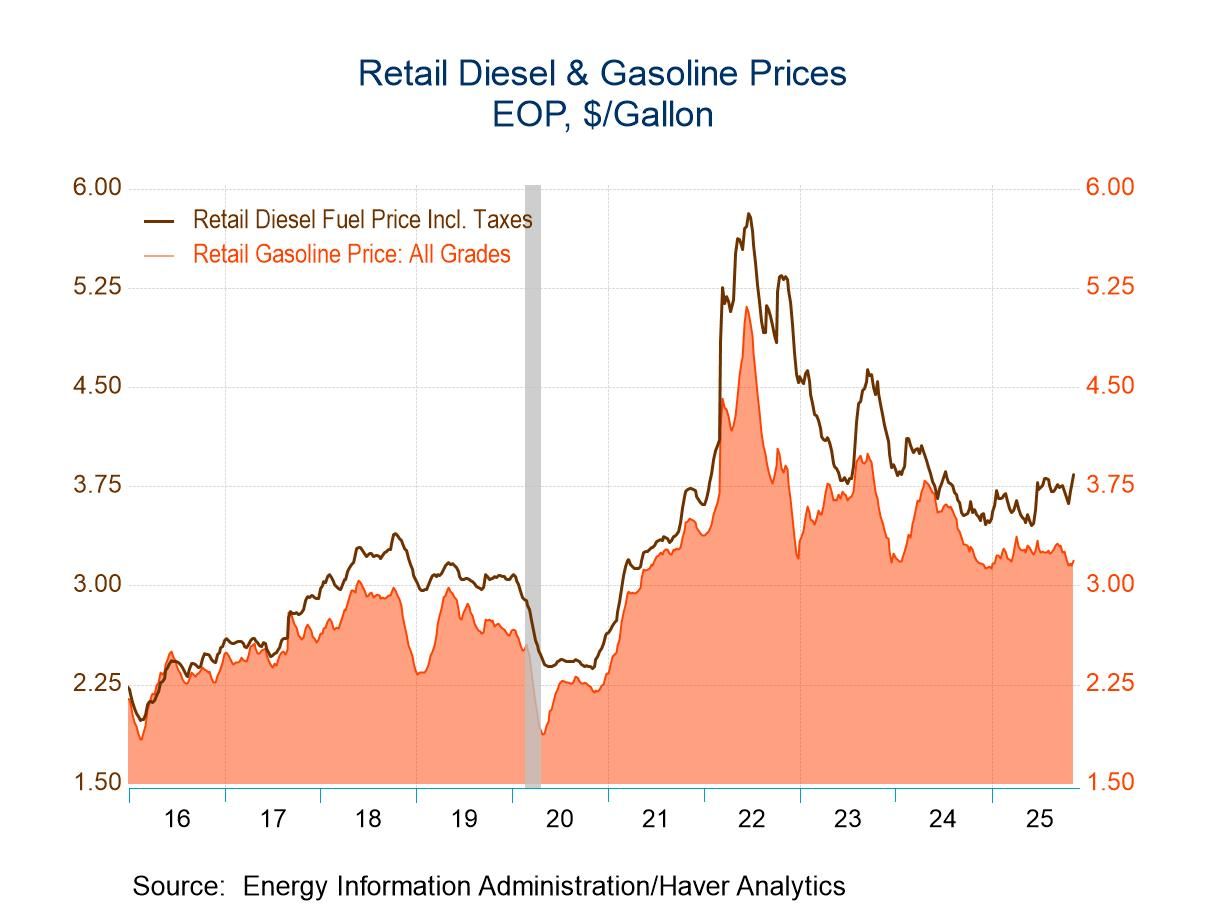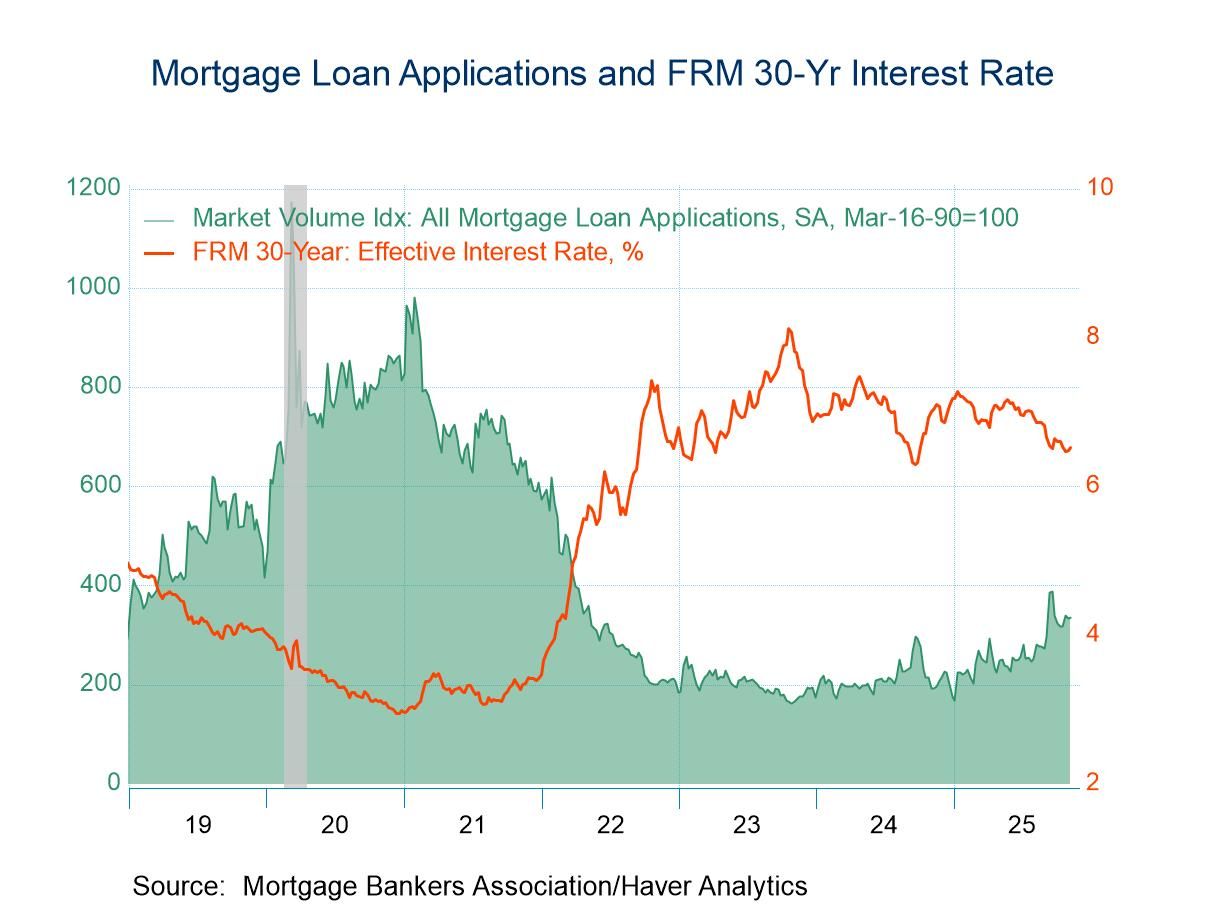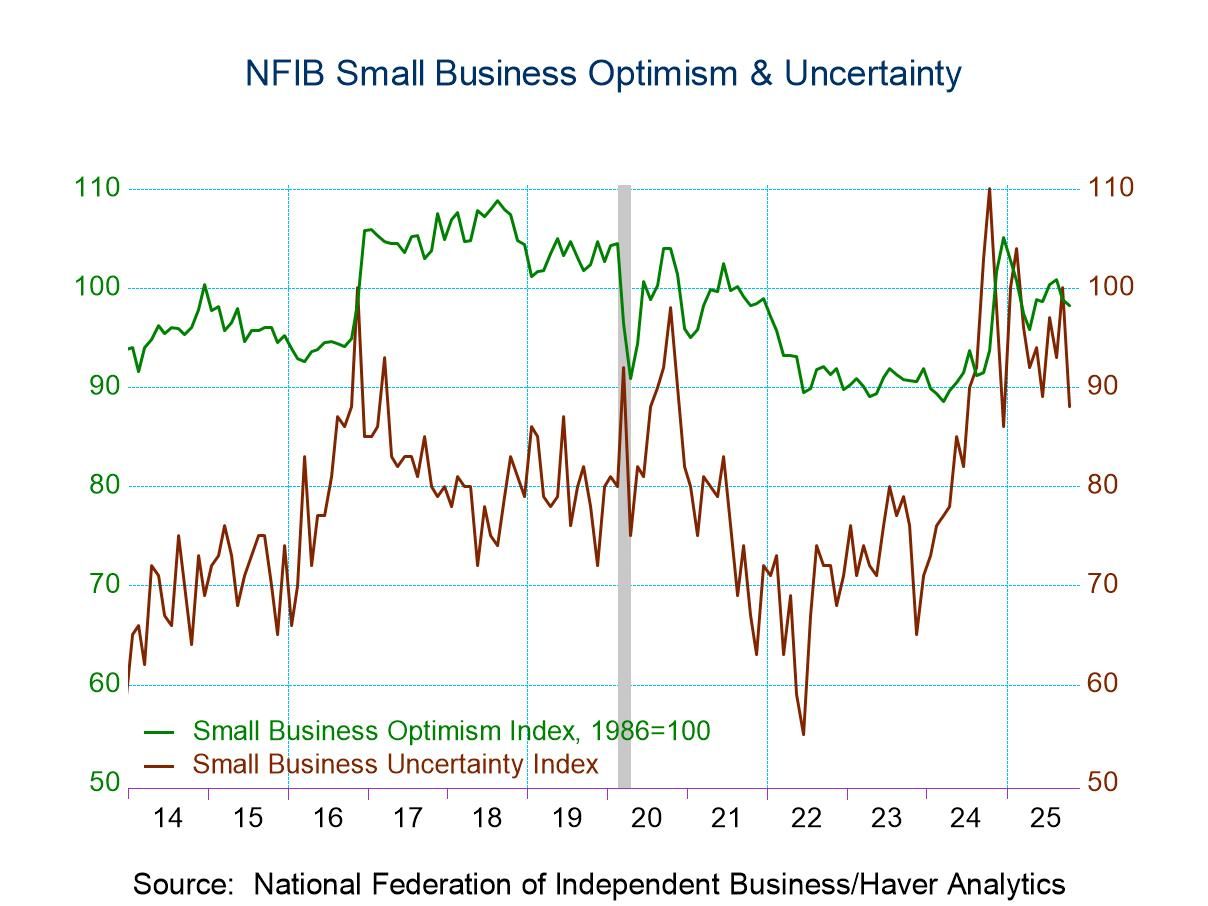Inflation in Finland Ends Its Tranquility; Is Finland a Bellwether?


The chart (on the left) is a reminder about how inflation works. This chart works for Finland; it works for most countries showing the tracking of overall inflation against oil prices. The chart shows current developments as well as some from 2016 and 2018 when oil prices flared and had a much more muted impact on overall inflation in Finland. However, the spike in oil prices in 2021 has added to other factors and had a substantial impact on inflation; meanwhile, the subsequent runoff in Brent prices preceded the deceleration of inflation in Finland as well as globally.
Once you have those results, it's instructive to look at what oil prices are doing currently. From the chart (on the right), we can see that the long run down in oil prices has finally bottomed and between June and August oil prices are once again rising. This plot of daily oil prices includes the European free market price of Brent as well as the U.S. domestic price for West Texas intermediate. This turnabout in crude prices suggests that some of the best news on inflation may be over at least for the headline.

This chart shows the tracking of oil prices against PPI prices in the U.S., Germany, Japan, and the U.K. It's quite clear from the chart that when the Brent prices change there is generally a change in the growth rate of the underlying PPIs. The intensity of the association between Brent and other prices seems relatively small. Note that Brent prices are on the left scale that shows a great deal more variability than the right scale where PPIs are plotted. However, it's still true that when Brent prices go up, PPIs tend to accelerate in most of these countries; when Brent goes down, the PPI inflation rate tends to settle lower - and we have seen that in this cycle in spades. Brent prices surged in 2021 with PPI inflation peaking thereafter in 2022, in these countries. Then, after Brent turned lower, we observed that the inflation rates in the U.S., Germany, Japan, and the U.K. also turn lower.
It's a small effect so why worry? The problem that this chart flags is not that there's a small upturn in Brent prices that is going to wreak havoc with the inflation indexes. The upturn in prices is quite small and it's clear from the chart that the impact from small changes in Brent prices to domestic and inflation is also small stuff. However, inflation is already too high; if Brent prices are starting to move higher, that would suggest that making further progress on inflation reduction is going to be difficult. The threat right now is not to Brent making inflation higher but to Brent or West Texas prices reducing or eliminating the downward pressure that we've seen on inflation.

Current trends Inflation, as currently experienced by all these central banks, is higher than what they've been targeting. This is not a time when they want to face an additional source of price pressure. Most of these economies are showing some weakening in output, which through traditional macroeconomic slack, imparts some weakness to prices by itself. However, we know the war in Ukraine has spread the risk not just to oil prices but to agricultural goods so that there are other potentials for an inflation impulse to work its way into prices. Setting aside commodity prices, there is still the problem that wages in most countries are running relatively high and much hotter than underlying inflation targets would allow. At the same time, the productivity developments have been poor.
I find- as I have found from the very beginning of the Federal Reserve’s raising rates- that there is a great deal of inexplicable optimism that central banks generally are either not going to raise rates very much or not going to raise them much farther and that, despite that, inflation is going to come to heel on its own. This is an outcome that is possible. Believers in such an experience are certainly those who cut their teeth on inflation trends in the last 10 to 15 years and they certainly don't include too many people who had trading experience from the 1970s or even the 1980s. But few (if any…) of ‘those people’ are left. History tells us inflation is hard to tame. It generally does not behave all by itself. And the special global financial conditions that helped to create price stability over the last 15 years or so have largely been undermined by COVID, by the supply problems that COVID engendered, and by corporate responses to try to make their supply chains more secure by sourcing their output elsewhere. The assumption that inflation in the post-COVID period will migrate back to where it was in the pre-COVID period, is an assumption without much foundation. I consider it to be something that's more akin to religion; the sort of thing that you believe rather than the sort of thing that you can demonstrate or prove. Investing based upon religious beliefs is not really recommended. However, this seems to be a widely held point of view. But with commodity prices stirring again, it may be a good time to check the philosophical underpinnings of your investment strategy.
Robert Brusca
AuthorMore in Author Profile »Robert A. Brusca is Chief Economist of Fact and Opinion Economics, a consulting firm he founded in Manhattan. He has been an economist on Wall Street for over 25 years. He has visited central banking and large institutional clients in over 30 countries in his career as an economist. Mr. Brusca was a Divisional Research Chief at the Federal Reserve Bank of NY (Chief of the International Financial markets Division), a Fed Watcher at Irving Trust and Chief Economist at Nikko Securities International. He is widely quoted and appears in various media. Mr. Brusca holds an MA and Ph.D. in economics from Michigan State University and a BA in Economics from the University of Michigan. His research pursues his strong interests in non aligned policy economics as well as international economics. FAO Economics’ research targets investors to assist them in making better investment decisions in stocks, bonds and in a variety of international assets. The company does not manage money and has no conflicts in giving economic advice.







 Global
Global